 AT A TIME when so many books on politics, religion, and world events are little more than puffed-up pamphlets which are simultaneously high on hyper-partisanship and low on facts, J. M. Berger‘s Jihad Joe, a treatment of the radicalization and actions of American Muslims who have dedicated themselves to “violent jihad” (the author’s chosen term), is a breath of fresh – and troubling – air. Painstakingly researched and heavily footnoted (the author, an investigative journalist, consulted thousands of pages of court records and documents obtained through FOIA request, as well as source material from the making of multiple documentaries on jihadi activities in Bosnia and in the U.S.), Jihad Joe does not couch opinion as fact, but instead makes use of often disparate stories and information sources to weave together a factual account of radicalized American Muslims, from their diverse motivations and processed of radicalization to their actions.
AT A TIME when so many books on politics, religion, and world events are little more than puffed-up pamphlets which are simultaneously high on hyper-partisanship and low on facts, J. M. Berger‘s Jihad Joe, a treatment of the radicalization and actions of American Muslims who have dedicated themselves to “violent jihad” (the author’s chosen term), is a breath of fresh – and troubling – air. Painstakingly researched and heavily footnoted (the author, an investigative journalist, consulted thousands of pages of court records and documents obtained through FOIA request, as well as source material from the making of multiple documentaries on jihadi activities in Bosnia and in the U.S.), Jihad Joe does not couch opinion as fact, but instead makes use of often disparate stories and information sources to weave together a factual account of radicalized American Muslims, from their diverse motivations and processed of radicalization to their actions.
The bulk of Jihad Joe is a lesson in recent history, recounting the motivations and activities of Americans who have “go[ne] to war in the name of Islam” from the siege of Mecca in 1979, where two Americans were involved, to the present. It traces the heady days of the heavily-endorsed (by Islamic leaders and the U.S. alike) jihad against the Soviet Union in Afghanistan, when Muslims from America and around the world traveled to fight against the Russian invaders, to the founding of al Qaeda, where an American from Kansas City served as note-taker, through the Bosnian conflict, to the “war on America” that al Qaeda began in the 1990s (which included action in Somalia during the infamous “Black Hawk Down” incident), and which is currently ongoing. Among the major takeaways from this fast, engaging read (it can be comfortably read in a single weekend) is the realization that the radicalization of, and participation in what Berger refers to as “violent jihad” by, American Muslims is far from a new phenomenon.
Though violent jihadis have always made up a very small percentage of American Muslims, the total of 1,400 or more that Berger estimates took part in violent jihad over the last 30 years (p. xi) may come as a shock to those used to considering individuals like Adam Gadahn, John Walker Lindh, Jose Padilla, Nidal Hasan, and Anwar al-Awlaki as individual and unique cases within a largely unprecedented phenomenon. Other key current participants in jihadi and terrorist operations (two terms which, Berger notes, have become “inextricably linked” only in recent years [pp. 203-4]) include – among others – Washington, DC native Daood Syed Gilani, who performed reconnaissance in advance of the 2009 Lashkar e-Taiba attack on Mumbai, India; Faisal Shahzad, the would-be Times Square bomber who attended college in Bridgeport, Connecticut; and al Shabaab member Omar Hammami, a native of Daphne, Alabama native and an erstwhile rapper.
AMONG THE MOST interesting characters in a book full of them (Berger documented nearly 300 American citizen and legal resident jihadis for the book) is Ali Abdelsaoud Mohamed. A former Egyptian military officer who was recruited by the current head of al Qaeda, Ayman Al-Zawahiri, Mohamed infiltrated the CIA in the early 1980s before being burned by another asset; after being declared persona non grata by the agency, he worked as a counterterrorism adviser to Egypt Air before, in 1986, successfully emigrating to the United States despite having been placed on a visa watch list as a result of his CIA double-dealing. Once in America, Mohamed successfully enlisted in the U.S. Army, where he was assigned to the John F. Kennedy Special Warfare Center and School at Fort Bragg, the home to the Army’s special operations training command, and made assistant director of the Middle East Seminar for the school’s Special Operations and International Studies Department.
A brazen double agent, Mohamed not only regularly walked classified documents and manuals down to the local Kinko’s to make photocopies, but he traveled to Afghanistan while on leave in 1988 to join the jihad against the Soviet Union and to train the mujaheddin in military tactics, and traveled to New Jersey on weekends beginning in 1989 to train more aspiring jihadis. Only a few years later, Mohamed would move to San Francisco and infiltrate the FBI there, offering authentic information with “real intelligence value in exchange for access” (p. 101). Mohamed’s “illustrious terrorist career,” Berger notes, “would span at least three continents and encompass some of al Qaeda’s most deadly terrorist attacks – the 1993 world trade center bombing, the East African Embassy bombings, and perhaps even September 11” (p. 27). He was finally caught in 1998, when an FBI raid in the wake of the embassy bombings found “a shocking collection of documents that showed just how sophisticated al Qaeda was: manuals describing surveillance techniques and tactics used by government intelligence agencies, instructions for creating improvised explosives, codebooks, coded letters, al Qaeda intelligence reports…., and reports on the activities of U.S. law enforcement” (p. 112).
ALSO NOTEWORTHY IS Berger’s comprehensive treatment of Anwar al-Awlaki, which spans portions of three chapters and chronicles the New Mexico-born cleric from his time at San Diego and Virginia mosques, where Fort Hood shooter and radical Islamist Nidal Hasan attended, to his current Yemen-based role with al Qaeda in the Arabian Peninsula (AQAP). Perhaps the most comprehensive and accessible account of Awlaki’s career, Berger follows the radical cleric’s path from carefully considered statements and sermons that at least bore the veneer of moderation, to his full-fledged coming out as a supporter of terrorism in 2009-10, while noting the preponderance of evidence (and the circumstantial nature of that evidence) for his involvement in some capacity with the 9/11 attacks.
Berger rightly criticizes the significantly inflated role in al Qaeda that some media representatives and analysts have assigned Awlaki in declaring him “the next bin Laden” (which, he writes, is “based on a fundamental misunderstanding of each man’s role and capacity” [p. 149]), while carefully pointing out the differences between bin Laden and Awlaki, as well as the unique threat the latter poses: namely, in Berger’s words, that he “attracts lunatics, points them at America, and pushes” (p. 150), with most of the “lunatics” he has directed against America to date having been “miserable failures” (p. 148). The simplicity of that phrase should not be taken as evidence that Berger has underestimated Awlaki’s value to the conduct of violent jihad, not his threat to America; however, he credits the recent publicity that Awlaki has enjoyed – including the 2010 finding that made him the first American citizen to be added to the CIA’s target list – with playing a significant role in increasing the Yemeni-American’s profile and influence within the jihadi community.
As Berger notes, “the end of Awlaki’s story has yet to be written, and the American imam has prove[n] himself full of surprises” (p. 150). Indeed, it has recently come to light that bin Laden himself ultimately turned down a 2010 request by AQAP that the high-profile Awlaki be installed as head of the Yemen-based terrorist organization; further, the ranks of those Americans who have heeded Awlaki’s call to individual jihad against targets within the United States have continued to grow (most recently with Army Private and “peace activist” Naser Abdo), even if they have not improved their success-to-attempt ratio.
IT IS DIFFICULT to come away from Jihad Joe without having acquired a view of domestic radicalization as a problem that is a mile wide or more, even if it is only the proverbial inch deep in relation to the wider American Muslim population. It is likewise difficult not to be palpably frustrated by a law enforcement apparatus that seems, over the course of the last three decades of Americans participating in violent jihad, to have been utterly incapable of getting out of its own way when it came to tracking dangerous individuals and getting them off the streets. The story of Ali Mohamed, mentioned above, is the most dramatic example of this, but a recurring theme within the stories presented in Jihad Joe is an unwillingness or inability on the part of the military, law enforcement, and the nation’s political leadership to properly deal with the topic of religiously-based radicalization. During the Afghanistan conflict in the 1980s, this was largely understandable, as the U.S. was a supporter of the mujahedin, which drew Muslims from around the globe to fight the Soviet Union; however, the precedent set then and in the early 1990s carried over through the last years of the last millennium and beyond, resulting in an America which was unprepared for the guns, bombs, and rage of the violent jihadi minority to be turned from the “near enemy” – those threatening Muslims in Afghanistan and Bosnia – to the “far enemy” here in America, which was more accessible and more “realistic” to native jihadis (p. 77).
A particularly valuable contribution made by Jihad Joe is a survey of our increasingly web-based world’s impact on the radicalization and recruitment of young Muslims to violent jihad, including the phenomenon of “jihobbyists” who interact online with militants, sometimes getting their “fix” that way, and sometimes (in much smaller numbers) progressing in radicalization to the point where they too engage in violent jihad. The Internet has allowed the public at large access to unprecedented information, including radical Islamic literature, audio, and video; partly as a result of this, and partly as a result of the scattering and destruction of terrorist training sites and organizations in the War on Terror, the process of radicalization and engagement in violent jihad has been turned on its head, from the 20th century model of intensive, rigorous, and highly organized religious and military training to the 21st century model of potential radicals in any geographic location taking the “Wikipedia approach to expertise” and declaring themselves religious experts “capable of deciding religious questions that have life-and-death consequences” (p. 201). “Before 9/11 someone who selected himself for jihad usually did so because he was pretty damn tough,” writes Berger. “After 9/11 someone who selected himself was more likely to be a voracious reader” (p. 201).
This new world of individualized violent jihad, in which people anywhere in the world have access both to radical Islamist literature and media and to instructions on the construction and use of a wide range of weaponry, has allowed for violent jihad to be waged with less religious grounding and on a far more scattered – and potentially common – basis. Anwar al-Awlaki is perhaps the most noteworthy of those who have embraced this highly decentralized form of violent jihad, the effects of which can be seen in several incidents across the U.S., from Hasan’s rampage, to attempted attacks by Abdo on Fort Hood, by Faisal Shahzad on Times Square, to Abdul Hakim Mujahid Muhammad’s killing of two soldiers at an Arkansas military recruiting center, among others. Berger points to the small overall number of American Muslims that has a proclivity for violent jihadi activity, and the probability that those inclined to act are also most likely to attract the attention of law enforcement, as dual reasons why there has not been a successful mass casualty attack on American soil since 9/11, though a terrorist attack does not have to produce a high casualty count to be effective. Though this scattering of far less skilled and professional jihadis across a far wider geographic area and target set has resulted in a lower percentage of successful attacks, the more “flooding the zone” that is done, the greater the chance that one or more Golden BBs will strike their targets, killing Americans and ratcheting up the level of national concern over our domestic security (see pp. 210-13).
AT A TIME when domestic radicalization is a hot but poorly understood (and highly partisan) topic, Berger’s book is timelier than ever. Though the New York Times found a significant component of Jihad Joe‘s value to be in Berger’s “sharp caution[ing]” against “vilifying Muslim Americans” by “blur[ring] the line between Islam and terrorism” – a correct statement – the greater value it provides is to those seriously interested in the issue, and prevention, of radicalization (a subject the Times reviewer, like too many commentators, appears to have been far less interested in than he was in firing rhetorical bullets at individuals on the other side of the political divide).
Fortunately, Berger approaches this topic as he does the rest of Jihad Joe: soberly, and with an eye only for facts. He is as unafraid to note that “Americans of every race and cultural background have made the decision to take up arms in the name of Islam and strike a blow for what they believed to be justice” (p. 203) as he is to acknowledge the role of some Islamic centers in the radicalization of the earliest American jihadis, and the “meaningful ties to jihadist movements” possessed by organizations like the Council for Muslim-American Relations (CAIR; p. 205). In some cases, the definition of “justice” being observed by these jihadis was somewhat in line with what could be considered mainstream American beliefs and interests, such as the jihadi effort to repulse the Soviet invasion of Afghanistan and to protect persecuted Muslims in Bosnia. However, Berger also correctly notes that some Muslims have chosen to engage in violent jihad “for base reasons – anger, hatred of the “other,” desire for power, or an urge toward violence” (p. 203), and provides examples of each within the text. He also demonstrates traits which tend to trend (in varying quantities) across radicalized Muslims, including idealism, violent tendencies, ideology, identity politics, alienation, and fetishization of sex and women (pp. 207-8).
Perhaps chief among the key stops Berger identifies on the road to radicalization is the “urgent feeling that Muslims are under attack,” an “urgent feeling” shared by “virtually all American jihadists” (p. 204). This can be seen in the response to Afghanistan and Bosnia, but it can also be seen elsewhere in the world – including in America. The desire to respond to perceived attacks on Islam and Muslims is directly fed by a victim complex which is “deeply entrenched in mainstream Muslim thought, both at home and abroad” (p. 205). As the author notes in his conclusion, extreme anti-Muslim rhetoric does exist, and it does contribute to the perception that Islam itself is under attack – and therefore to radicalization. “You cannot tell someone, ‘You are my enemy,’ and then blame them for believing you,” he writes (p. 216).
While true, the flip side of this coin, as Berger acknowledges, is the further entrenchment of the perception of America as anti-Muslim which is accomplished not only by Muslim groups like CAIR, but by other organizations which are quick, with or without supporting facts, to declare Americans “Islamaphobic,” to accuse any who mention Islam in relation to a jihadi terrorist an opponent of all Muslims, and to rail against the supposed persecution of mainstream Muslims within the U.S. Besides furthering the perception at home and around the world that Muslims are less welcome in American society than is accurate, such lashing out also, inadvertently or not, causes the vast majority of Muslims who are peaceful to be further associated with the minority that carries out violent attacks in the name of their shared faith. This, in turn, adds to the perpetuation of the cycle of victimization and radicalization, helping fuel the next generation of jihadis.
THE PROBLEM OF the radicalization of American Muslims is far from new, as J. M. Berger recounts with painstaking and engaging detail in Jihad Joe. Though there is no magic formula available to help understand why it is that a subset of Muslims currently seems prone to violent radicalization in larger numbers and in a wider geographic range than members of other major faiths, the noting of trends across those who have been radicalized is valuable for the insight it provides into what may make up a higher-risk individual. Likewise, though there is no silver bullet offered or available to prevent such radicalization, Berger soberly addresses some factors that should be taken into account when considering courses of action to reduce the likelihood that individuals without a proclivity for violence will engage in violent jihad.
Even above these important topics, the primary value of Jihad Joe in my opinion is its well-researched and incredibly accessibly presented history of American involvement in violent jihad. My primary critique of the book’s layout would be to note the value that would be added by a brief glossary of individuals, as a layperson can quickly become lost in a sea of foreign names spanning three decades of history. This may be possible in a second edition of this book; however, Berger does take care to include reminders about who various individuals are when they are encountered for a second time or more within the text, and the book is well-indexed, so the inclusion of such a glossary is more preferable than it is necessary.
Jihad Joe is a book that should be on the reading list of any individual – expert or layperson – who wants a detailed but readable introduction or quick-reference guide to the topic. Further, it would be a valuable addition to university courses on terrorism and American-Islamic relations, as its combination of information, accessibility, and engaging writing make it a unique and valuable contribution to the field.
Jihad Joe by J. M. Berger (ISBN 1597976938; $23.96) is published by Potomac Books.

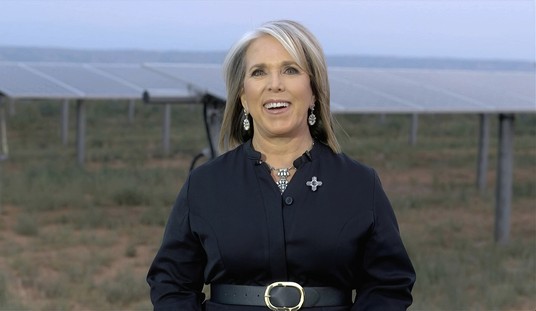
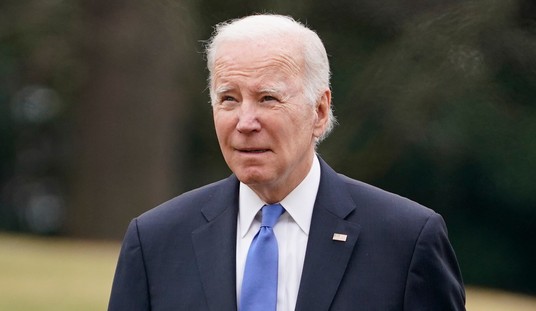

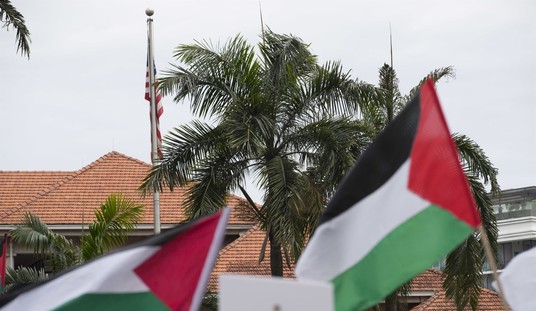

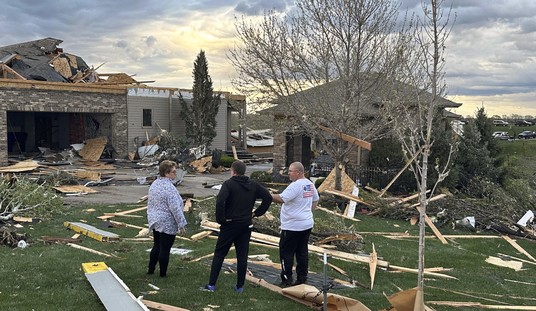

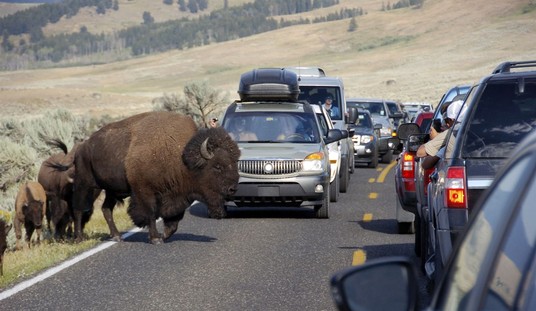




Join the conversation as a VIP Member